Opinion
Paul Wells: A poor choice of venue
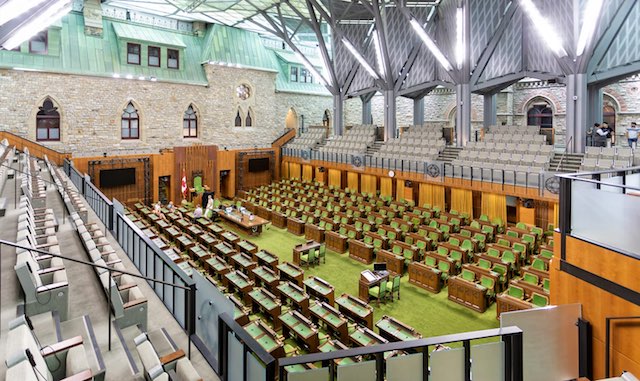
From Paul Wells on Substack
The Liberals wanted to beat Pierre Poilievre in the House of Commons. No such luck.
On Pierre Poilievre’s first day as leader of the Opposition, eleven months ago, the Liberals’ best available minister sought to frame the battle ahead.
“We are going to see two competing visions over the course of this session,” Randy Boissonnault said, largely ignoring Poilievre’s first question.
“The first is our government’s plan to support Canadians and those who need it most. The second is that of the Conservative Party and members of Parliament who would leave Canadians to their own devices.”
Boissonnault’s answer struck me at the time as the best available information about the Trudeau Liberals’ plan for Poilievre. It’s worth revisiting.
Paul Wells is a reader-supported publication. To receive new posts and support my work, consider becoming a free or paid subscriber.
At the time, late in September 2022, Poilievre had won a resounding victory over the rest of the Conservative leadership field. The Trudeau government had an opportunity to influence votes’ perceptions of the Liberals’ latest opponent. Many observers assumed the Liberals would do this through some sort of ad campaign, as Stephen Harper had done against Paul Martin, Stéphane Dion and Michael Ignatieff, and tried to do against Trudeau, always well ahead of an election.
Boissonnault was announcing the Liberals wouldn’t do this. The main parties’ “two competing visions” would become clear throughout “this session,” in the venue where life is divided into sessions: Parliament. (My procedure-wonk friends will remind me that a “session” isn’t a school year, it’s the space between a Throne Speech and a prorogation or dissolution. Still, a year is a good time for an interim check-in, and plainly things are happening.)
I’m going to say it hasn’t gone well for the Liberals. A stack of polls tells me so, but we don’t only need polls. The Cabinet has gathered in Charlottetown to hear from an academic who calls the state of housing in Canada “a crisis.”Meanwhile the guy who ran economic policy for Justin Trudeau’s government for seven years is calling affordable housing “the urgent economic need of today.” Imagine how many urgent economic needs we’ve heard about since 2015. Maybe the urgent economic need all along was to resist the urge to treat every need as urgent. Anyway the Liberals expected they could govern by picking issues that would work to their advantage. Instead an issue has been picked for them.
Poilievre made no secret of his own plan to use housing shortages to illustrate “two competing visions.” Every time he stood that day he repeated that housing prices had doubled under Trudeau. Boissonnault’s response was, in some cases, to ignore the question (“Mr. Speaker, let us talk about how people can pay their bills with our new dental plan”) and in others, to mention the day’s latest government policy: a one-time top-up to the Canada Housing Benefit, which would be worth $500 for people whose family income was under $35,000. The top-up began two months after Boissonnault spoke and ended three months after that, in March of this year. After that, Boissonnault and his colleagues would leave Canadians to their own devices, we might say.
Thank you for reading Paul Wells. This post is public so feel free to share it.
Why has the parliamentary session, as glimpsed since last September, been a bad choice of venue for the Liberals’ narrative of two competing visions? A few reasons.
First, most Canadians ignore Parliament. This trend has accelerated in the last eight years. Partly because the audience for just about any given thing in our society has declined as attention spans fragment. Partly because it’s increasingly obvious that the House of Commons no longer provides even occasional surprise. Stephen Harper and Jean Chrétien used to say surprising things. Not often. But they’d reveal a conversation they’d had, or announce a decision, or cleverly sabotage a question’s intended effect. This crew is earnest and general. Always.
Second, Poilievre likes Parliament more than Trudeau does. Not in the sense that he respects it as an institution. Neither of them does. The whole notion is quaint. But Poilievre looks forward to Question Period, rehearses for it, relishes its limited opportunities. Trudeau, who systematically demotes naysayers, has never believed he should have to put up with any in the middle of his workday.
It’s easy to understand a guy disliking Parliament. But disliking Parliament makes Parliament an odd choice of venue for making any kind of important case.
The third problem with the notion that an ordinary governing year would define Poilievre is that it allowed Poilievre to specialize while the government generalized. Any Canadian government has to manage the normal array of dreary files, the bilateral relationship with the U.S., the post-pandemic recovery, ports and bridges and health transfers and public-sector strikes. Not every day can be a message day, even for a government that tries to make its every act a message. That’s why governing parties often prefer to put the “governing” and “party” parts of their mission under distinct command structures.
It’s often said that in making his campaign team his governing team, Trudeau limited the effectiveness of his government. It’s increasingly clear the problem goes the other way too: How can a Prime Minister’s Office think clearly about politics?
The upshot is that while the Liberals have been fitfully defining their opponent he has been diligently defining them. It has gone better for him than for them. A new poll, by Abacus for the Toronto Star, shows that “more [respondents] think Poilievre is genuine than phoney, strong instead of weak, down to earth instead of elitist.” This will be vexing news for readers who think the Conservative leader is phoney, weak and elitist, but in politics the goal isn’t to believe your own beliefs really hard, it’s to get other people to believe them. Here the Liberals’ problem is much like their problem on housing: It’s as though they just realized they have a job to do.
A note to readers as an election approaches, whether that election happens in 2023, 2024 or 2025. If you have a strong emotional investment in anyoutcome in that election, this newsletter will certainly disappoint you. I’m not here to help Poilievre. I’m not here to defend Trudeau. I see qualities and flaws in each. I might even amaze everyone by mentioning the NDP, once or twice. This isn’t an artificial stance born of some mandate for “objectivity” or, worse, “balance.” I’m selling my opinions here. But my opinions don’t line up cleanly with the party lines in most elections and they won’t in this one.
Readers who are inclined to work fulltime to correct other readers’ opinions should remind themselves that the election won’t be won or lost in the comment board of the Paul Wells newsletter. Thanks, as always, for your support and interest.
Automotive
EV transition stalls despite government mandates and billion-dollar handouts

From the Fraser Institute
By Elmira Aliakbari and Julio Mejía
Both Canada and the United States have set ambitious mandates to accelerate the transition from combustion vehicles to zero-emission vehicles. According to the Trudeau government, all new passenger vehicles and light trucks sold in Canada must be zero-emission vehicles by 2035, with interim targets of 20 per cent by 2026 and 60 per cent by 2030. Similarly, the Biden administration has mandated that two-thirds of new vehicles sold in the U.S. must be electric by 2032. But despite massive taxpayer-funded subsidies for the electric vehicle (EV) sector, storm clouds are growing for the industry.
In April, Tesla laid off 10 per cent of its global workforce as it grapples with slow EV demand and falling sales. Similarly, Ford recently announced it would delay the start of EV production at the Oakville, Ontario plant by two years to let the consumer market develop and allow for further development of EV battery technology. Car rental giant Hertz earlier this year announced plans to sell one-third of its U.S. electric vehicle fleet and reinvest in gas-powered cars due to high repair costs and weak demand for its battery-powered cars. General Motors has abandoned the goal of producing 400,000 EVs by mid-2024 due to lower-than-expected sales.
The sluggish demand for EVs and the response from automakers should raise red flags for both the Trudeau government and Biden administration, given the massive subsidies (a.k.a. corporate welfare) injected into the EV and battery production industry. For instance, in Ontario, the Trudeau government and the Ford government have given $28.2 billion to the Stellantis EV battery plant in Windsor and the Volkswagen plant in St. Thomas. According to the Parliamentary Budget Officer, it will take 20 years for the federal and Ontario governments to break even on the $28 billion pledged for those two plants. And this doesn’t include the $5 billion subsidy to Honda for a new EV manufacturing plant in the province.
Similarly, in Quebec, federal and provincial governments have pledged to spend $2.7 billion in subsidies for a new EV battery manufacturing plant and give $644 million to help Ford build a plant to produce EV battery materials.
But in reality, the EV transition faces major hurdles despite the massive amounts of taxpayer money being thrown at the industry.
Firstly, we lack adequate power grid infrastructure to meet the electricity demands of EV mandates. According to a recent study, meeting Canada’s EV mandate by 2035 could increase electricity demand by up to 15.3 per cent nationwide, necessitating substantial investments in new generation capacity and transmission infrastructure. Specifically, Canada would need to construct 10 new mega hydroelectric dams, comparable to British Columbia’s Site C, or alternatively, 13 new gas plants of 500-megawatt (MW) capacity to accommodate the surge in electricity demand from EVs.
Yet the timelines and costs associated with such projects are daunting. Drawing from recent experience with B.C.’s Site C dam, it took more than a decade to plan and comply with environmental regulations and approximately another decade to construct. To date, Site C, which remains under construction, is expected to cost $16 billion.
Secondly, there’s a shortage of mineral supply for EV batteries, with projections indicating the need for numerous new mines to meet EV adoption mandates. According to a recent study, to meet international EV adoption mandates (including mandates in Canada and the U.S.) by 2030, the world would need 50 new lithium mines, 60 new nickel mines, 17 new cobalt mines, 50 new mines for cathode production, 40 new mines for anode materials, 90 new mines for battery cells, and 81 new mines for EV bodies and motors, for a total of 388 new mines worldwide. For context, in 2021 there were only 340 metal mines operating in Canada and the U.S.
Historically, the development of mining and refining facilities has been sluggish. Production timelines range from six to nine years for lithium and 13 to 18 years for nickel—two elements critical for EV batteries. The aggressive government timelines for EV adoption clash with historically sluggish metal and mineral production, raising the risk of EV manufacturers falling short of needed minerals.
The EV transition faces major obstacles, and the recent scaling back or delays in EV production by automakers should serve as a warning to governments about the feasibility of their forced transition policies, which clearly put Canadian taxpayers at risk.
Authors:
National
Parks Canada deer hunt project to cost taxpayers $12 million

From the Canadian Taxpayers Federation
Author: Ryan Thorpe
The expert marksmen, from the United States and New Zealand, only managed to kill 84 deer. Eighteen were the wrong kind of deer
At $10,000 a deer, this is already an expensive hunting trip.
But the bill is about to get a lot bigger.
Parks Canada has earmarked $12 million for its controversial plan to eradicate a deer species and restore native vegetation on a tiny island in British Columbia, according to access-to-information records obtained by the Canadian Taxpayers Federation.
“It’s hard to imagine how Parks Canada could spend millions shooting deer,” said Franco Terrazzano, CTF Federal Director. “Here’s the kicker: hunters who actually live on the island are bagging these deer for free.”
The $12-million Fur to Forest program is a Parks Canada effort to eradicate the European fallow deer population on Sidney Island (located between the coast of B.C. and Vancouver Island), and restore native vegetation, tree seedlings and shrubs.
So far, Parks Canada has employed exotically expensive hunting techniques.
Foreign sharpshooters armed with restricted semi-automatic rifles hunted the deer during phase one of the operations. Phase one cost more than $800,000, including $67,000 spent renting a helicopter, for a hit to taxpayers of $10,000 a head.
The expert marksmen, from the United States and New Zealand, only managed to kill 84 deer. Eighteen were the wrong kind of deer – native black-tailed deer. They weren’t able to confirm the species of the three other deer shot.
It is illegal to harvest the wrong species of animal during a hunt in B.C.
Meanwhile, residents of Sidney Island organized their own hunt last fall. They killed 54 deer at no cost to taxpayers.
“It’s crazy that Parks Canada flew in marksmen from other countries to shoot deer,” Terrazzano said. “It’s even crazier that these ‘marksmen’ kept shooting the wrong kind of deer.”
It’s been widely reported the project will cost $5.9 million.
But the records obtained by the CTF show the story gets worse for taxpayers. A detailed project budget obtained through an access-to-information request reveals Parks Canada plans to spend $11.9 million on the scheme.
Taxpayers will be on the hook for $4.1 million for the killing of deer on Sidney Island, according to the records. An additional $2.8 million will go towards the salaries and benefits of Parks Canada staff.
A total of $137,000 will be spent on “firearms certification for international workers” throughout the project, while $1.4 million will go towards studies and analysis, and nearly $800,000 is earmarked for “Indigenous participation.”
Breakdown of costs, Fur to Forest program, access-to-information records
|
Salaries |
$2.3 million |
|
Analysis and Studies |
$1.4 million |
|
Indigenous Participation |
$800,000 |
|
Deer Eradication |
$4.1 million |
|
Miscellaneous* |
$3.3 million |
|
Total |
$11.9 million |
*Includes $53,000 for “forest restoration” services, “plants” and “seedlings.”
Parks Canada estimates there are between 300 and 900 invasive deer on the island. Phase two of the operation, which is scheduled to begin this fall, will involve ground hunting with dogs.
“Let’s just state the obvious: Parks Canada is bad at hunting and more money isn’t going to make it better,” Terrazzano said. “The good folks who live on Sidney Island are clearly more qualified to handle this and the government should get out of their way.”
-
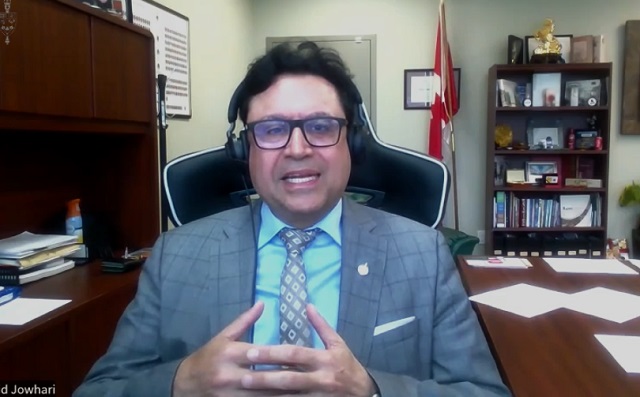
 Addictions2 days ago
Addictions2 days agoLiberals shut down motion to disclose pharma payments for Trudeau’s ‘safe supply’ drug program
-
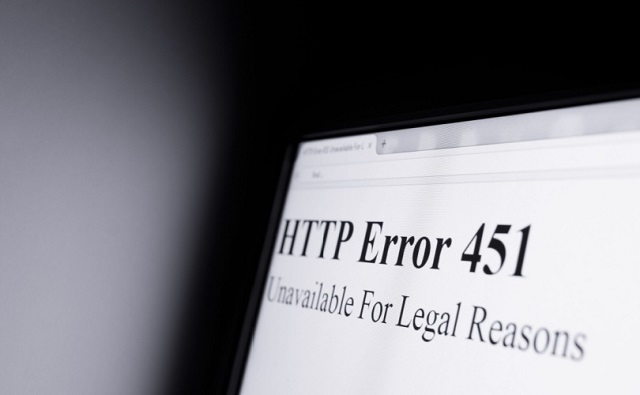
 National2 days ago
National2 days agoTrudeau’s internet censorship Bill C-11 will not be implemented until late 2025
-
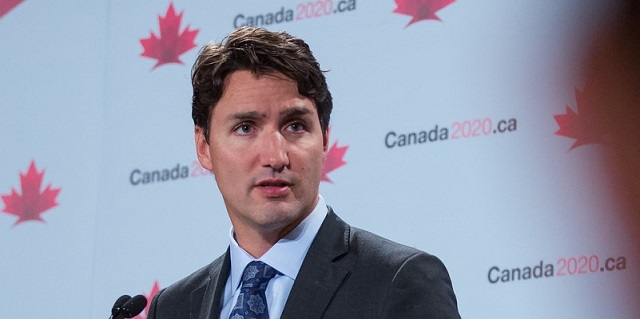
 Economy2 days ago
Economy2 days agoPrime minister’s misleading capital gains video misses the point
-
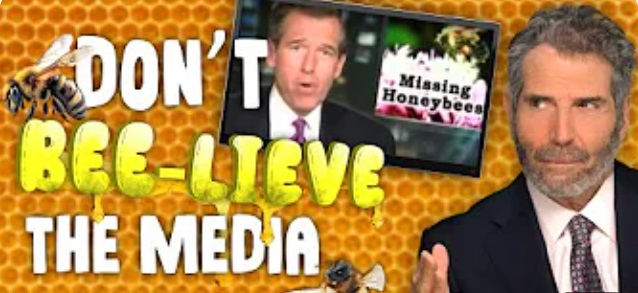
 Food2 days ago
Food2 days agoThe Bee-pocalypse: Another Scare Story the Media Got Wrong
-

 Automotive2 days ago
Automotive2 days agoThe EV battery ‘catch-22’
-

 Frontier Centre for Public Policy1 day ago
Frontier Centre for Public Policy1 day agoThe Great Canadian Hoax exposed
-

 DEI2 days ago
DEI2 days agoLawmakers press investigation into DEI agenda at the Pentagon
-
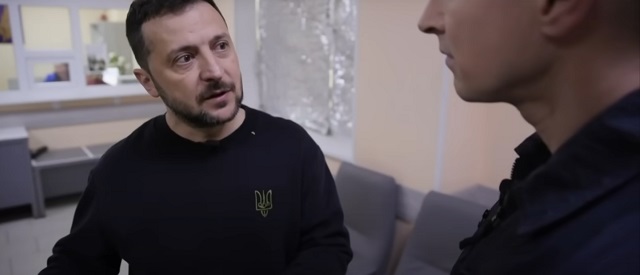
 conflict1 day ago
conflict1 day ago‘What’s The Problem?’: Zelenskyy Says NATO Needs To ‘Shoot Down’ Russian Missiles In Ukraine’s Airspace







